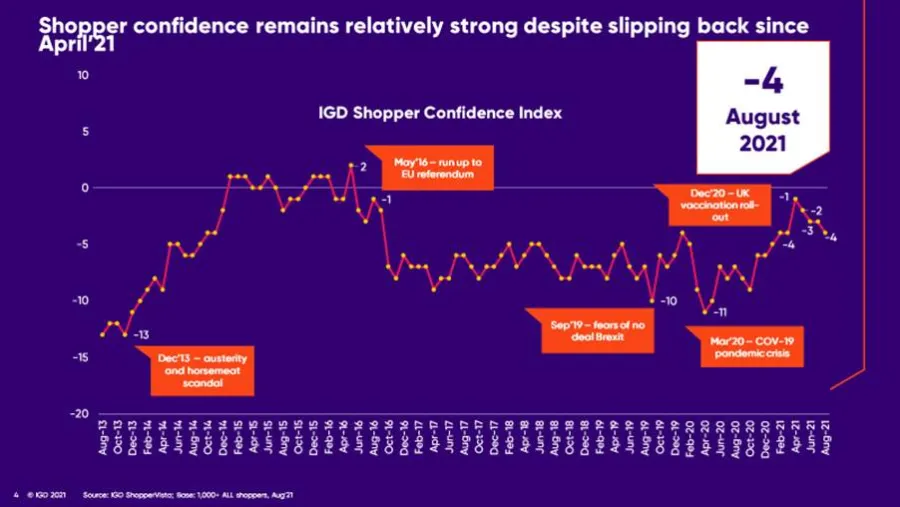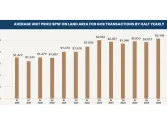
Concerns around rising inflation increasing: IGD
However, confidence among younger shoppers has increased for the first time since April 2021.
Shopper confidence took a further dip as rising inflation concerns continue, according to IGD.
The company’s July 2021 Shopper Confidence Index revealed 79% of shoppers expect food prices to get more expensive next year, compared to 75% in July this year.
The August Shopper Confidence Index also saw a widening of the K-shaped economic recovery, with 28% of higher affluence groups expecting to be better off in the year ahead, compared to 23% in July 2021. Meanwhile, lower affluence groups increasingly believe they will be worse off in the year ahead, with 26% believing this compared to July’s 23%.
Shopper confidence slipped back slightly to -4 in August, having declined for three of the last four months. However, IGD saus it remains relatively high and is still at one of the highest levels in the last five years.
Confidence among younger shoppers has increased for the first time since April 2021, with 37% of 18–44-year-olds expecting to be better off in the coming year.
Overall, financial confidence remains relatively high with 24% expecting to be better off in the year ahead, up 3% compared to July.
Shopper confidence is notably declining in Scotland, registering -7 on the index compared to -2 in July 2021, amid growing COVID cases and warnings that restrictions may have to be reimposed.
Simon Wainwright, Director of Global Insight at IGD, said: “The continued rise in inflation concerns are likely to lead to a sudden return to risk-aversion and more value-seeking behaviour, particularly among families who are hard-pressed financially.”
“Retailers will need to pay close attention to the widening K-shaped recovery; lower affluent families will increasingly seek out value, so special offers, everyday low prices and visits to discount stores will become prominent. On the reverse, more affluent shoppers will continue to trade up and focus on quality due to increased disposable income created by pent-up savings.”


























